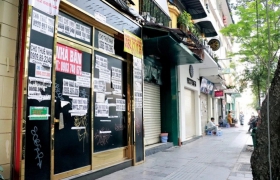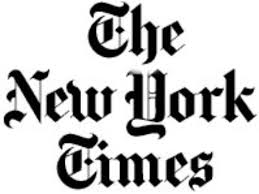Virus fears have resulted in numerous cancellations of spring break trips, graduations and destination weddings that account for most spring bookings. “It’s horrible timing for this to happen,” she said. “People are canceling left and right.”
The next day she secured a small-business loan to cover two months of overhead and salaries for 29 employees. If the downturn continues past the two-month window her loan covers, she plans to close one location and reduce her staff to part time.
“I’ve been through 9/11, Zika, MERS, SARS; I’ve been through it all over 34 years,” she said. “With this, the timing couldn’t have been worse.”
Surge in coronavirus patients threatens to swamp U.S. hospitals
The resulting pressure has been most evident in bond markets. Typically, as stocks plummet, investors buy U.S. government bonds, which are widely viewed as a haven. But last week, both stocks and bonds sold off.
As stock prices plunged, some hedge funds sold Treasury bonds to raise cash to repay borrowings they had used to make risky investments. Cash-strapped energy companies likewise sought to turn their government securities into cash. And banks that needed cash to fund their business customers did the same.
“Bank treasurers are faced with a choice: Support their corporate customers who want a line of credit or deploy capital to markets. It’s clear which one they’re choosing: their customers,” said Guy LeBas, chief fixed income strategist at Janney Capital Management.
In the trading frenzy, bond sellers demanded much higher prices than the handful of ready buyers would accept — an extraordinary sign of dysfunction in a market that is usually the epitome of order.
“What happened is the Treasury market became one-sided: everyone is selling and not many people are buying,” said Roberto Perli, a former Fed official in 2008 and now a partner at Cornerstone Macro.
The Fed stepped in twice in recent days to inject extra cash to grease bond market operations. That came on top of the Fed’s March 3 interest rate cut of half a percentage point, which did little to calm the market. More aid might be needed and could come on or before the central bank’s next rate-setting meeting scheduled for Wednesday.
Further complicating the economic outlook is an intensifying oil price war involving Saudi Arabia and Russia.
Oil prices face a one-two punch. The coronavirus is idling people, trucks and ships, causing a collapse in demand. And after price-setting talks between the Organization of the Petroleum Exporting Countries and Russia broke down this month, the Saudis opted to increase production. That flooded the market with oil and sent prices spiraling toward levels not seen since the late 1990s.
“We’ll see a huge surge in oil supply over the next few weeks and no demand for it. We think the price will dip into the $20 range and could even touch the teens,” said Francisco Blanch, head of commodities and derivatives research at Bank of America.
At those prices, the United States’ shale oil and gas boom is in trouble. Most U.S. and European companies can’t survive for long with oil below $40 a barrel, many analysts say. On Friday, the president announced that the government will buy oil on the open market to fill the nation’s strategic reserves.
The news nudged oil up a few dollars per barrel, but prices remain well below the break-even point for most producers. Goldman Sachs predicts that nearly one-third of the oil and oil services companies in the country will vanish, acquired by rivals or driven out of business.
Traders are watching for signs that energy companies may default on their debts, a development that would batter regional banks in Texas and Oklahoma and could cascade through the $10 trillion corporate bond market.
For now, analysts say the financial pain is unlikely to be as widespread as in 2008 because fewer financial products are linked to these securities in the way that mortgages were used to create complex derivatives during the housing bubble.
Even so, investors are nervous. Overall financial conditions — a measure of access to credit that takes into account interest rates, currency values and bond yields — are tighter than they have been in nearly a decade, since a 2011 scare over a potential sudden slowdown in China.
And when Wall Street opens Monday, analysts will be watching potential trouble spots such as risky corporate borrowings called leveraged loans and exchange-traded funds, a popular consumer investment, for any hint of bottlenecks.
Mark Guarino in Chicago and Karen Weintraub in Boston contributed to this report.
By WashingtonPost





















































 Yahoo:
Yahoo: 